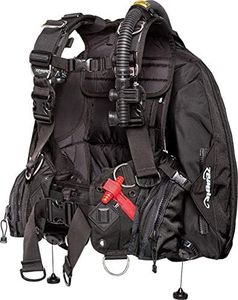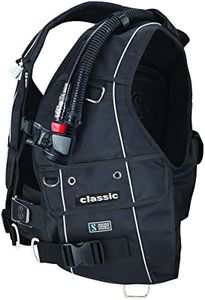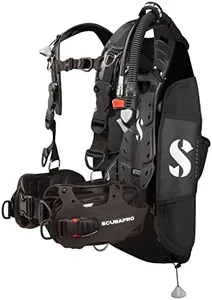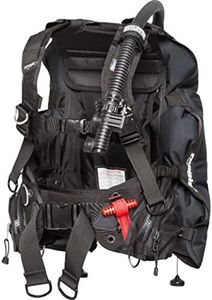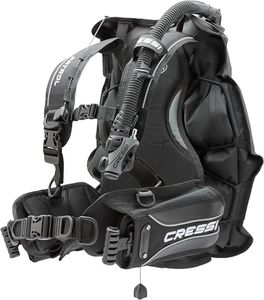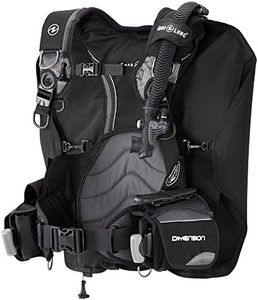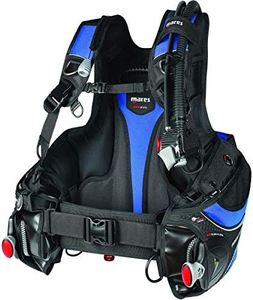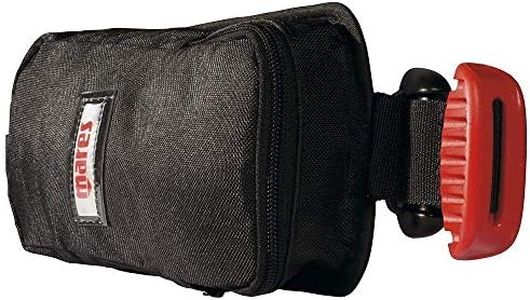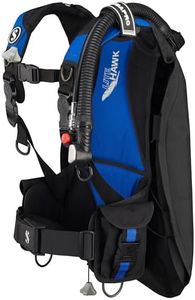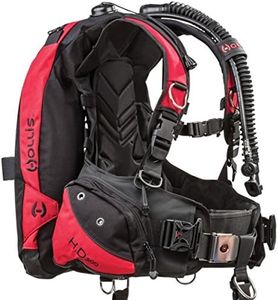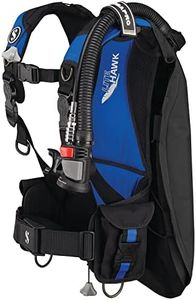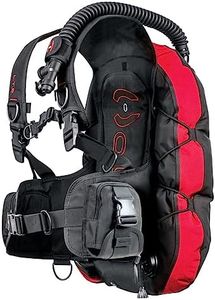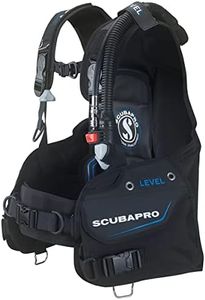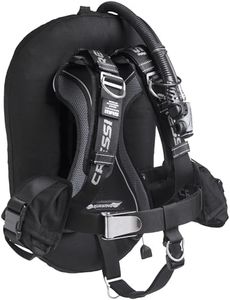We Use CookiesWe use cookies to enhance the security, performance,
functionality and for analytical and promotional activities. By continuing to browse this site you
are agreeing to our privacy policy
10 Best Travel Bcd
From leading brands and best sellers available on the web.Buying Guide for the Best Travel Bcd
When it comes to buying a travel BCD (Buoyancy Control Device) for scuba diving, making the right choice can greatly influence your comfort, safety, and overall enjoyment on your dive trips. The perfect BCD for travel should strike a balance between being lightweight and compact for easy transport, while still offering the comfort, durability, and features you’ll need in various diving environments. Start by thinking about how and where you'll use the BCD most often—consider the typical water temperature, your dive experience, and style preferences. Remember, a great travel BCD fits well, supports your gear efficiently, and streamlines the packing process.Weight and PackabilityWeight and packability describe how heavy and bulky the BCD is when not in use. This is crucial for travel because airlines have luggage limits, and you'll want to avoid extra fees and hassles. Travel BCDs typically range from ultra-light (under 2 kg) to moderately light (about 3-4 kg). If you're a frequent flier or prefer to keep your gear to a minimum, aim for the lightest and most foldable designs. However, if you want more features or robustness, you might accept a slightly heavier model. Choose a weight that matches your travel style and frequency to ensure convenience without sacrificing too much on comfort or durability.
Lift CapacityLift capacity refers to how much weight the BCD can help you keep afloat. It's important to have enough lift to compensate for your body, suit, and any gear, especially when diving in different environments. Light-duty travel BCDs tend to offer lower lift (10-15 kg), which works well for warm water and minimal gear. Medium lift (15-18 kg) is more versatile, handling a range of conditions. Heavy lift (over 18 kg) is usually reserved for cold water or technical dives with more equipment. Choose the lift you need based on the type of dives and gear you usually use: warm-water recreational divers can go lighter, while those expecting heavier gear or cold water may need more lift.
Fit and AdjustabilityFit and adjustability are about how well the BCD conforms to your body, and how easily you can customize that fit. Comfort is essential, as a poor fit can cause discomfort or distract you underwater. Features include adjustable shoulder straps, cummerbunds, and chest straps. Travel BCDs might streamline these options to save weight, but make sure there's enough flexibility to fit you snugly. When choosing, prioritize a design that feels secure yet comfortable, considering your torso length, shoulder width, and waist. Always try on a BCD with your usual dive suit to ensure a proper fit.
Durability and MaterialDurability and material refer to what the BCD is made from and how well it stands up to regular use. Travel BCDs often use lighter materials which may not last as long as those on standard models, but many use strong yet thin fabrics and reinforced stitching in key areas. For occasional travel use, lighter fabrics are likely fine. For frequent divers or those visiting rough conditions, look for reinforced panels and solid hardware. Pick based on how often and in what conditions you'll use the BCD.
Storage and Attachment OptionsThis spec is about the number and type of pockets, D-rings, and other places to store or attach dive accessories. Travel BCDs typically reduce bulk by minimizing pockets and metal rings. Some have roll-up pockets or lightweight alternatives. If you travel light and carry few accessories, minimalist options may be perfect. However, if you need spots for a camera, torch, or gear, select a BCD that offers enough storage and attachment points. Thinking about the typical accessories you use will guide the right balance for you.
Inflation System (Integrated Weight System)The inflation system refers to how you control buoyancy—either by oral or power inflation—and whether the BCD has an integrated weight system, which lets you ditch a traditional weight belt by placing weights into pockets built into the BCD. Some travel BCDs shave weight by skipping integrated weights, using detachable pockets, or offering simple harnesses. If you prioritize travel weight above all, a harness system may suit you, but if comfort and balance matter more, look for integrated weight options that are stable and easy to use. Your preference for managing weights and how much gear you usually carry will help determine the best choice.
